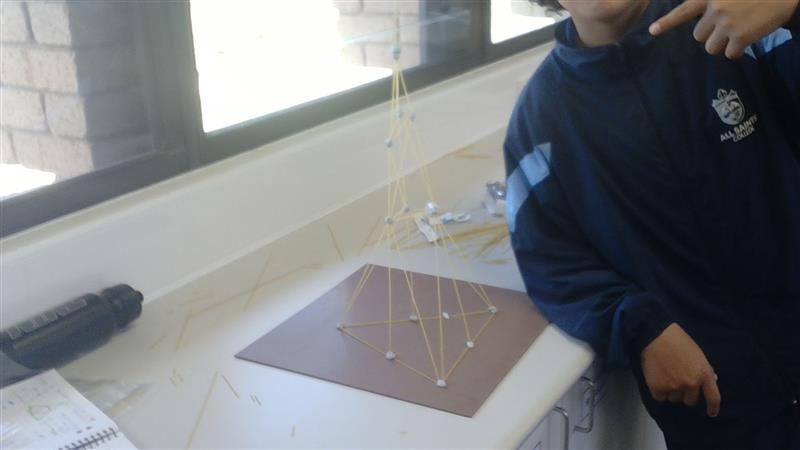For the past 3 weeks in science, we have been working on a fun, creative and collaborative task involving the construction of a spaghetti and blue-tack tower to teach us about the engineering of buildings in earthquakes. We worked in teams of 3-4 and we were challenged into researching, designing, building and evaluating the construction around our towers. To increase the difficulty of the challenge, our build had to reach a minimum height of 60cm and have a base no wider than 30x30cm and remain within this threshold after being put to the test in an earthquake simulator. Furthermore, we had a maximum budget of $60 to spend with set costs for each resource ( spaghetti – $1 per 10cm and blue-tack – $1 per gram).
Engineering Process
To help guide us and to show our work, we filled in a Stile task about the engineering process throughout the challenge. This was helpful as it showed us what we were assigned for the next couple of weeks but it became boring filling out the information as it seemed repetitive. I think our team would have been more successful in this task if we were to hit the Stile early and have time to work on the building of our tower as we didn’t have all the information that others did due to their research. We were efficient to use our knowledge from previous learning in science and other classes such as Specialised PE where we learnt about biomechanics in sport and transferred it into our building by having a large base of support, the central line of gravity and a low centre of gravity. During the construction of our initial prototype, we only copied the base we had designed which lead to lots of weaker joints halfway up the pyramid which, lead to our initial design breaking. For our second build, we decided to start the whole design again but with the knowledge from our previous design. We didn’t have enough time to test our second build due to many breaks during construction we were unable to test our new prototype. It could be improved by adding a new step such as peer feedback. A time when other people who are working on the same task swap building and leave feedback and advice on a groups build to give them another perspective.
Collaboration
Our group worked very well together and even with some slow times in productivity, we were able to reach the deadlines set to us by Mr Goor which were given in a table. Our group worked well together as we had different strengths and made up for each others’ weaknesses. Jayden was the lead builder because a has a steady hand and is calm under pressure. During the building phase, he did 80% of the building while Adrian was in charge of getting all the correct resources and leading the research. Hunter drew diagrams and lead the design process and due to his father being an engineer, he was able to get tips to help us. I floated around and was happy to help where ever needed. I helped Jayden if he needed a hand to keep the building steady or if Hunter needed a second opinion on a diagram. I was happy to do anything that helped the group but I spent most of my time collaborating with at least one other person in my team. Ultimately, the progress my group made is due to us acknowledgingothers’ strengths and weaknesses and using problem solving, creativity and teamwork.
This has been a very fun and relaxed task that allows us to demonstrate our teamwork and problemsolving skills while using our creativity and our knowledge of the engineering challenge.


